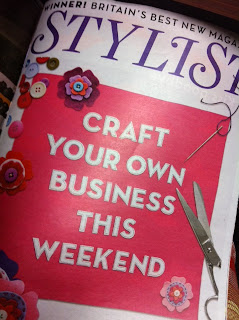This month started with peer feedback from my tutorial group. My question at th beginning of the month was:
How can traditional practices and culture be maintained with the use of crafting in contemporary society?
My journey of learning and understanding different crafting skills from designer makers and enthusiasts hasdeveloped into filming designer/makers and enthusiasts. As well as people who are just getting involved with crafts for the first time.
I have continued to research into new materials or materials that can be used in unusual innovative ways to help crafting be seen in a different light. I have found some wonderful materials, but as yet I haven't thought of how these can be sued in my kits.
I would still like to encourage groups of friends, families and communities to get more involved in activities together, to encourage storytelling and the diffusion of knowledge and skills across generations. My thoughts did develop a little with regard to using craft as a way of empowering communities to become more engaged in decisions about their local environment. I was amde aware from one of my films, that new mums would really relish a scheme that allowed them to learn new creative skills, rather than only coming together to concentrate on baby-related issues. There are a number of artists that already specialise in participatory arts installations in communities that I could contact. However I feel there are already a lot of schemes that do this, and so I do not feel this would be original enough for a Masters project.
Thinking about my artefact, I am still concentrating on a type of kit and instructions that combine:
Fun,Games, Crafting, New skill, Re-using, Communication, Working together, New materials, Recycling
I have always been interested in identity, the mental barriers we put in place of our own development
and creativity, and the way we amplify negativity in comparison to positive feedback and encouragement. So I have been considering how these kits could help people further understand themselves and encourage creativity and develop their imagination.
and creativity, and the way we amplify negativity in comparison to positive feedback and encouragement. So I have been considering how these kits could help people further understand themselves and encourage creativity and develop their imagination.
I have also been totally inspired by the 2 exhibitions I went to at the Design Museum, for different reasons and in different ways. The Threads of Feeling exhibition at the Foundling Museum was great in that it helped me think further about the idea that these kits could help people with identity and creative development. There were projects that explored the relationship between crafting, the charity and vulnerable young people. I would love for my artefacts to be used to help vulnerable people, to get them to explore who they are and where they fit. This led me to think about Graffi-tee, a project where the kit contained things to help individuals create a T-Shirt that represented who they really were.
I feel very positive about my progress this month, and I hope to develop on my ideas through March.

















































